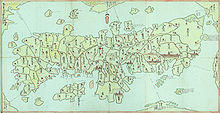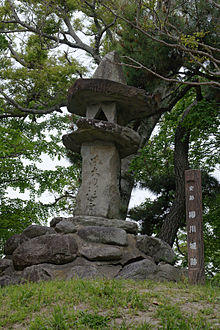| Yanagawa Domain 柳河藩 | |
|---|---|
| Domain of Japan | |
| 1600–1871 | |
| Capital | Yanagawa Castle |
| • Type | Daimyō |
| Historical era | Edo period |
• Established | 1600 |
• Disestablished | 1871 |
| Today part of | Fukuoka Prefecture |
Yanagawa Domain (柳河藩, Yanagawa-han) was a Japanese domain of the Edo period. It was associated with Chikugo Province in modern-day Fukuoka Prefecture on the island of Kyushu.
In the han system, Yanagawa was a political and economic abstraction based on periodic cadastral surveys and projected agricultural yields.[1] In other words, the domain was defined in terms of kokudaka, not land area.[2] This was different from the feudalism of the West.
List of daimyōs
The hereditary daimyōs were head of the clan and head of the domain.
- Tanaka clan, 1600–1620 (tozama; 325,000 koku)
- Yoshimasa
- Tadamasa
![]() Tachibana clan, 1620–1871 (tozama; 109,000 koku)
Tachibana clan, 1620–1871 (tozama; 109,000 koku)
- Muneshige
- Tadashige
- Akitora
- Akitaka
- Sadayoshi
- Sadanori
- Akinao
- Akihisa
- Akikata
- Akihiro
- Akinobu
- Akitomo
See also
References

Map of Japan, 1789 – the Han system affected cartography
- ^ Mass, Jeffrey P. and William B. Hauser. (1987). The Bakufu in Japanese History, p. 150.
- ^ Elison, George and Bardwell L. Smith (1987). Warlords, Artists, & Commoners: Japan in the Sixteenth Century, p. 18.
External links
- (in Japanese) Yanagawa on "Edo 300 HTML" (19 Oct. 2007)
